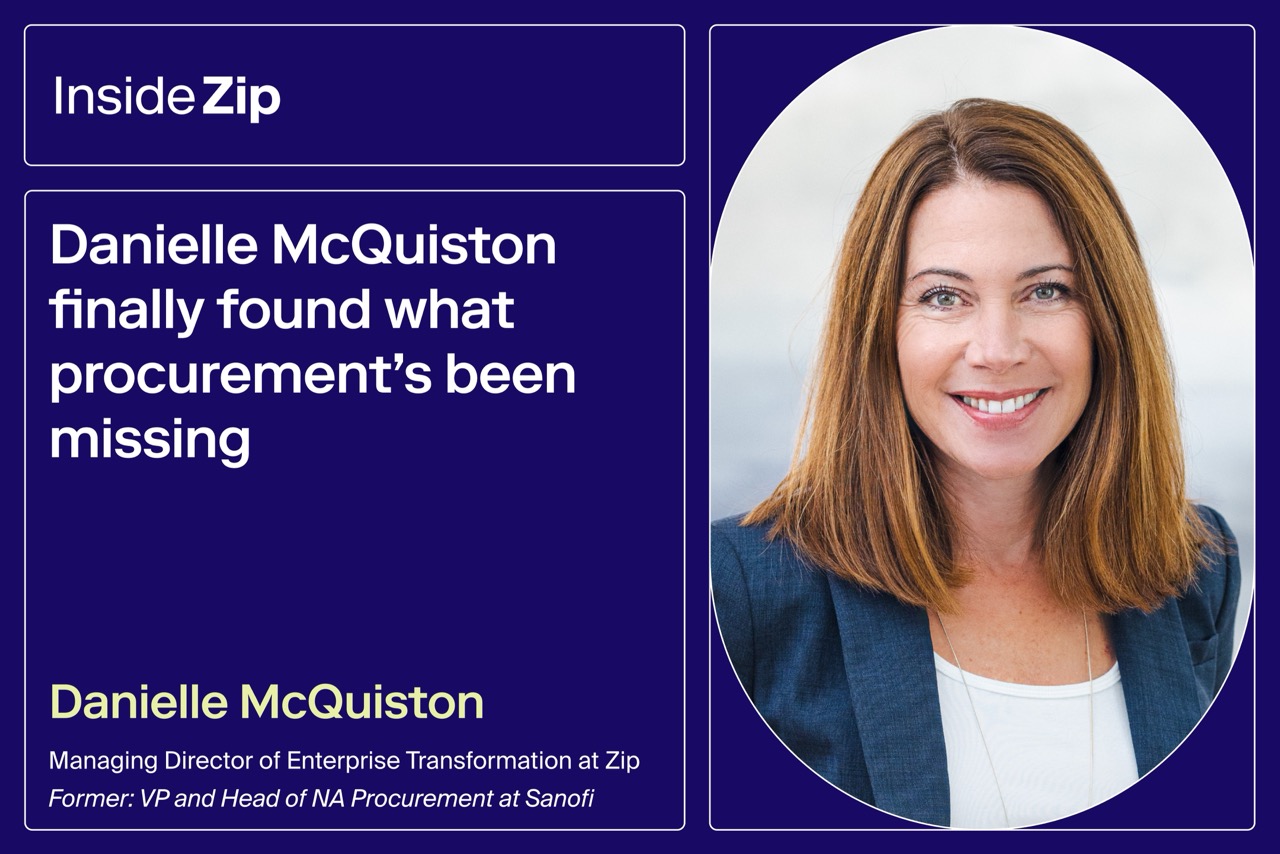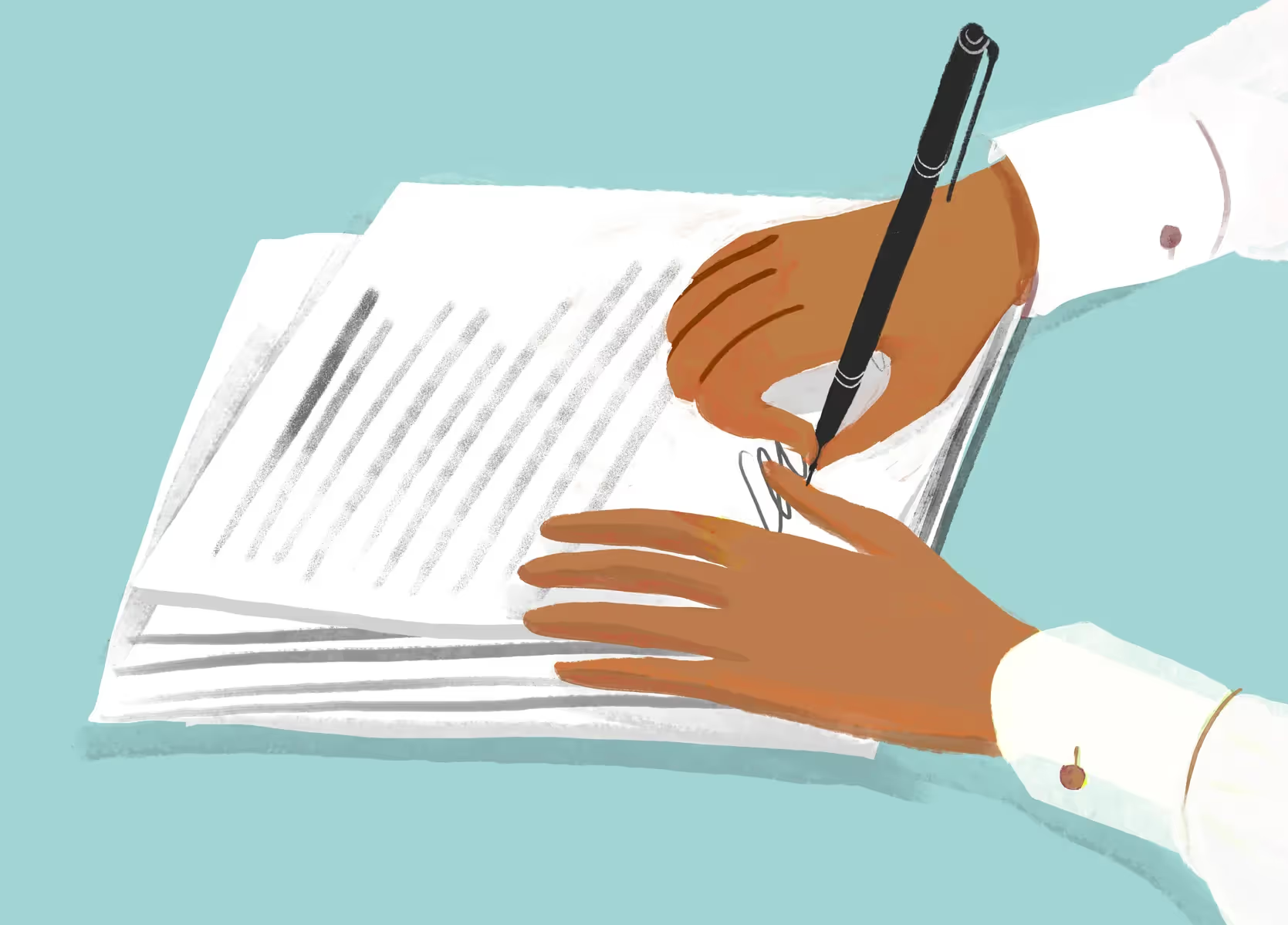
Procurement automation: Definition, benefits, and examples
Learn why procurement automation is essential and how to properly implement it.

A significant shift is underway in the procurement world, and the numbers speak for themselves. In fact, since 2024, 56% of procurement decision-makers have already embraced the power of technology to automate their once tedious manual processes.
Procurement automation is rapidly moving from a "nice-to-have" to a "must-have" for organizations looking to enhance efficiency, reduce costs, and gain a competitive edge. This article will delve into the intricacies of procurement automation, exploring its benefits, key technologies, implementation strategies, and the transformative impact it's having on modern businesses.
What is procurement automation?
Procurement automation refers to the use of technology to streamline and automate various tasks and processes within the procurement lifecycle. By leveraging tools, software, and platforms, businesses can automate activities like purchase requisitions, approval workflows, purchase order management, invoice approvals, and much more.
The ultimate goal is to make procurement faster, more efficient, and less prone to errors. By implementing automated workflows, organizations can significantly reduce the time it takes to procure goods and services, lower operational costs, improve compliance, and gain better visibility into their spending.
Why should you automate your procurement process?

If you're still on the fence about whether procurement automation is the right move for your business processes, consider the number of advantages that automation can offer. Here are some compelling benefits that are hard to ignore:
- Cost optimization: Automation can significantly reduce administrative overhead by streamlining the purchasing process, from requisition to payment. It also eliminates redundant steps, reducing the likelihood of errors that could prove expensive to fix.
- Better efficiency through reduced manual errors: A single manual error can create a ripple effect, leading to delays and potential financial loss. Automation significantly reduces manual errors, making the whole process much more efficient.
- Increased spend visibility: Automation tools often come with built-in analytics and real-time tracking capabilities. This feature gives your business immediate visibility into spending patterns, supplier performance, and contract compliance.
- Central repository of data: A centralized database that stores all procurement-related information—from supplier data to purchase histories—ensures data is easily accessible.
- Data-driven decision-making: With accurate, real-time data at your fingertips, you can make decisions that are not just timely but also rooted in solid facts and analyses.
- Reduced approval bottlenecks: Automation can streamline the approval process by setting predefined approval workflows. This feature ensures purchase requisitions move swiftly from one step to the next, reducing the time it takes to finalize purchases.
- Scalable workflows: As your business grows, your procurement needs will likely grow, too. With procurement automation, you can easily scale your existing workflows to accommodate an increased volume of transactions, more suppliers, and additional procurement-related tasks.
- Integration with existing apps and systems: Modern procurement automation platforms are designed to integrate seamlessly with your existing tech stack, whether it's your ERP system or accounting software.
- Risk reduction: By standardizing procurement processes and creating a trail of all transactions, automated systems can help reduce the risks associated with manual processes. Compliance becomes easier to manage, and you’ll be better equipped to deal with audits, adhere to industry regulations, and meet company policies.
What procurement processes can be automated?

While the term "automation" might sound a bit intimidating, the reality is that many procurement tasks can be easily automated to bring about real process improvements. Let's get into some examples and illustrate how automation can transform your procurement cycle for the better.
PO creation and tracking
Think about the old way of requesting supplies: Someone fills out a paper form, it gets passed around for signatures, and eventually, someone manually creates a purchase order.
With automation, this whole process becomes digital and streamlined. Here's how:
- Digital submission: Employees submit purchase requests through an online system, eliminating paper forms.
- Automated routing: The system automatically sends the request to the appropriate manager for approval based on pre-set rules and spending limits.
- Automatic purchase order (PO) generation: Once approved, the system automatically creates a purchase order.
- Direct supplier sending: The PO is automatically sent to the supplier.
Compared to the manual steps, automation saves your team significant time and reduces the chances of errors—no more lost forms, illegible handwriting, or delays waiting for physical signatures. Automation provides a clear audit trail of every request and approval, improves compliance, and frees up procurement staff to focus on more strategic tasks like supplier negotiation and relationship management, rather than getting bogged down in paperwork.
Supplier relationship management
Automation can significantly enhance supplier relationship management compared to manual methods. Instead of relying on scattered emails, spreadsheets, and phone calls, automation provides a centralized platform to manage all supplier interactions and information.
For instance, an automated system can:
- Track supplier performance: Automated systems can continuously monitor supplier performance against pre-defined key performance indicators, providing objective data on delivery times, quality, and adherence to contract terms.
- Flag potential risks: Real-time data analysis within automated platforms can identify potential risks associated with suppliers, like financial instability, delivery delays, or compliance issues, allowing for proactive mitigation.
- Streamline communication: Dedicated supplier portals within automation systems facilitate seamless communication, enabling efficient information sharing, project collaboration, and quicker resolution of queries.
- Manage supplier onboarding: Automated workflows can streamline the onboarding process, including collecting necessary documentation, verifying credentials, and ensuring proper integration into procurement systems.
- Conduct automated supplier evaluations: Instead of manual surveys and assessments, automation tools can regularly distribute and collect feedback on supplier performance, providing valuable insights for continuous improvement and strategic decision-making.
Automation empowers procurement teams to move beyond reactive problem-solving to strategic supplier engagement, fostering better collaboration, improving performance, and ultimately driving more value from their supplier base.
Invoice management
Automating invoice management can transform a traditionally cumbersome process into a streamlined and efficient operation. Instead of manually receiving, entering, and routing paper invoices, automated systems can handle:
- Automatic data capture: Instead of manually typing in invoice details, the system grabs the info automatically through methods like optical character recognition or electronic data interchange.
- Automated matching: The system automatically checks if the invoice amount and items match your original purchase order and what you actually received, catching discrepancies early.
- Streamlined approval workflows: Invoices are automatically routed to the correct people for approval based on pre-set rules, speeding up the process.
- Faster payment processing: Once approved, the system can schedule and process payments electronically, ensuring timely payments to suppliers.
Compared to manual invoice processing, automation drastically cuts down on processing times, minimizes the risk of data entry errors, and improves accuracy in matching invoices to supporting documents. This leads to faster payment cycles, stronger supplier relationships by avoiding payment delays, and better visibility into accounts payable.
Supplier payments
Automating supplier payments takes the hassle out of paying your suppliers. Instead of manually cutting checks, printing them, getting signatures, and mailing them out, an automated system can handle the entire process electronically through:
- Secure payment initiation: Once an invoice gets the green light, the system can securely send payments using different methods like direct bank transfers (ACH) or virtual credit cards, depending on what your suppliers prefer and what your company allows.
- Automatic record keeping: The system automatically logs all the payment details, so you have a clear record of when and how each vendor was paid.
- Automated notifications: Both your team and your suppliers can receive automatic updates when payments are sent, keeping everyone in the loop and cutting down on those "Did you pay yet?" emails.
Paying your suppliers automatically saves you time and money by getting rid of paper checks and postage. Plus, it allows for better cash flow management, as you can schedule payments more precisely and potentially take advantage of early payment discounts.
Contract management
Automating contract management takes the headache out of handling agreements with your suppliers. Instead of relying on shared drives, emails, and manual tracking, an automated system provides:
- Centralized contract repository: An automated system acts like a central digital library for all your contracts and related documents, making it easy for anyone who needs them to find them quickly.
- Automated alerts and reminders: The system automatically sends you notifications about important upcoming dates, like when contracts are nearing their renewal or expiration dates, and can even remind you about scheduled performance reviews.
- Version control: Automation keeps track of every version of a contract, so you can always be sure you're looking at and working with the most up-to-date agreement.
- Compliance tracking: The system can monitor whether everyone is following the terms and conditions outlined in your contracts, helping you stay on top of your obligations and avoid potential issues.
- Electronic signature capabilities: Automating contract management often includes the ability to sign documents digitally, which speeds up the entire signing process and eliminates the need for printing and physical signatures.
- Search and retrieval functionality: Need to find a specific clause or piece of information within a contract? Automation tools offer powerful search features that make it quick and easy to locate exactly what you're looking for.
- Workflow automation for approvals: The system can manage the process of getting new contracts or amendments approved by automatically routing them to the right people for review and sign-off, streamlining the entire workflow.
- Reporting and analytics: Automation can generate reports and provide insights into contract performance, highlight key terms, and even identify potential risks buried within your agreements.
By automating these tasks, procurement teams can spend less time on administrative work and more time on strategic contract negotiations and supplier relationship building.
Procurement automation real-world examples
To truly understand the transformative power of procurement automation, let's look at some real-world examples from industry giants. These companies have leveraged automation to streamline their procurement processes, achieve significant efficiencies, and gain a competitive edge.
IBM
IBM has implemented procurement automation across various aspects of their sourcing and purchasing operations. For instance, they've utilized AI-powered tools for supplier discovery and risk assessment, enabling them to identify potential partners more efficiently and proactively mitigate supply chain disruptions.
IBM has also automated their procure-to-pay process, leading to faster invoice processing cycles, reduced manual errors, and improved relationships with their vast network of suppliers.
Amazon
Ever wonder how Amazon is able to get your packages to you so quickly? Well, automation plays a huge role in managing their giant supply chain. They've automated a lot of their indirect procurement purchases, including office supplies and IT equipment, freeing up their procurement teams to focus on strategic sourcing for their core business operations.
On top of that, Amazon uses sophisticated algorithms for demand forecasting and automated purchase order generation, ensuring timely inventory replenishment and minimizing stockouts.
DHL
As a global logistics leader, DHL has embraced procurement automation to optimize their huge network of suppliers. They've implemented automated systems for transportation procurement, including freight rate negotiation and carrier selection, resulting in serious cost savings and improved efficiency in their logistics operations.
DHL has also automated their sourcing processes for packaging materials and other indirect goods, giving them more insight into what they're spending and better control over their costs.
What to look for in a procurement automation tool
Selecting the right procurement automation tool is an important decision that can make or break your procurement efficiency. To aid you in your decision-making process, here’s a checklist outlining the key factors you should evaluate:
Compatibility and visibility into approval workflows
When you're checking out procurement automation tools, two things you'll want to keep an eye on are compatibility and visibility in the approval workflow. You likely already have other software systems in place for things like accounting or managing your overall business. The new procurement tool needs to play nicely with these existing systems—otherwise, you could end up with data silos and extra headaches trying to get everything to talk to each other.
Visibility in the approval workflow is also important. You want to be able to easily see where a purchase request or invoice is in the approval process, who needs to take action, and if there are any bottlenecks causing delays. A good automation tool will provide a clear, real-time view of the approval stages, making it easier to track progress, identify potential issues, and ensure things move along efficiently.
Renewal management
Another thing to think about when you're looking at procurement automation tools is how well they handle renewal management. Think about all those procurement contracts you have with different suppliers—everything from office supplies to critical software. Keeping track of when these contracts are up for renewal, what the terms are, and whether you want to renew them can be a real juggling act if you're doing it manually.
A good procurement automation tool will have features specifically designed to help you manage renewals effectively, like automated reminders leading up to renewal dates, a central place to store all your contract terms and conditions, and even workflows to guide the review and approval process for renewals. By having these capabilities built in, you can proactively manage your contracts, negotiate better terms, avoid unwanted auto-renewals, and ultimately save your business time and money.
Supplier management
Your suppliers are an essential part of your business, and managing those relationships well is key. You want a procurement automation tool that can help you organize all their information, track their performance, and even manage communication. This makes it easier to see who your best partners are, identify any potential issues early on, and build stronger, more collaborative relationships.
A solid supplier management feature within a procurement automation tool can streamline many of these tasks. It can help with things like onboarding new suppliers, keeping their contact details and certifications up-to-date, and tracking how well they're meeting their commitments. Some tools even offer portals where you and your suppliers can easily share information and collaborate.
Advanced analytics
You'll also want to pay close attention to whether a procurement automation tool offers advanced analytics. Instead of just seeing what you bought, advanced spend insights and analytics can help you understand why you bought it, identify trends in your spending, predict future needs, and even pinpoint opportunities to save money or improve efficiency.
A tool with strong analytics capabilities can provide you with valuable reports and dashboards on things like your spending patterns, supplier performance, and how well you're sticking to your budget. This kind of information empowers you to make more informed decisions, negotiate better deals with suppliers, and optimize your overall procurement strategy.
Simplified payment processing
Let's talk about getting those invoices paid—it's an essential part of procurement, right? So, when you're shopping for automation tools, you'll want to see how they handle payment processing and whether they make it simpler.
Look for features that allow for electronic payments, easy integration with your accounting system, and automated payment scheduling. Some tools even offer options for different payment methods, which can be handy for dealing with various suppliers. By simplifying how you pay your vendors, you can save time, reduce administrative overhead, improve accuracy, and even build stronger relationships with your suppliers by ensuring they get paid promptly and efficiently.
How Zip’s Intake-to-Pay platform can help your procurement team
Businesses today need optimized procurement processes to stay ahead of the game. Zip's Intake-to-Pay platform offers a comprehensive suite of procurement automation capabilities, including streamlined purchase request workflows, automated approval routing, and seamless integration with existing systems.
With Zip, your procurement team can gain greater visibility into spending, improve efficiency, and free up valuable time for strategic initiatives. Ready to transform your procurement process? Request a demo from Zip today.

Maximize the ROI of your business spend

Enter your business email to keep reading



























.webp)



















.avif)













.avif)










.webp)





.avif)












.avif)
